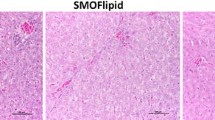Abstract
Alterations of the normal redox balance in mammals might be attributed to increases of plasma free-radical concentrations and/or a disruption of the protective mechanisms. These conditions lead to damage to cellular structure by the mechanism of lipoperoxidation, particularly in the liver, kidney, and central nervous system. In this study, the effect of general anesthesia on the oxidative metabolism of human plasma and erythrocytes was investigated. Forty-five patients undergoing anesthesia by using halothane, enflurane, or isoflurane were included in this study. Blood samples were taken preoperatively, the first hour, the first day, and the third day after the operation. Superoxide dismutase (SOD) and glutathione peroxidase (GSH-Px) enzyme activities and trace elements such as cofactor copper (Cu), zinc (Zn) and selenium (Se) levels were measured in plasma and red blood cells. Our results showed that halothane and enflurane administration increased the plasma GSH-Px activity and reduced zinc levels. In addition, they lowered SOD and GSH-Px activities and trace element levels on erythrocytes. Isoflurane had no effect on plasma antioxidant enzymes, but, similar to the other, isoflurane decreased the plasma zinc levels, erythrocyte SOD and GSH-Px activities and trace element levels.
Similar content being viewed by others
References
A. Dahan and L. J. Teppema, Influence of anaesthesia and analgesia on the control of breathing, Br. J. Anaesth. 91, 40–49 (2003).
D. E. Longnecker and P. D. Harris, Microcirculatory actions of general anesthetics, Fed. Proc. 39, 1580–1583 (1980).
B. Allaouchiche, R. Debon, J. Goudable, D. Chassard, and F. Duflo, Oxidative stress status during exposure to propofol, sevoflurane and desflurane, Anesth. Analg. 93, 981–985 (2001).
Y. Odaka, T. Takahashi, A. Yamasaki, et al., Prevention of halothane-induced hepatotoxicity by hemin pretreatment: protective role of heme oxygenase-1 induction, Biochem. Pharmacol. 59, 871–880 (2000).
I. A. Clark, Tissue damege caused by free oxygen radicals, Pathology 18, 181–186 (1986).
B. Halliwell, E. Borish, W. A. Pryor, et al., Oxygen radicals and human disease, Ann. Intern. Med. 107, 526–545 (1987).
M. S. Parihar and M. K. Pandit, Free radical induced increase in protein carbonyl is attenuated by low dose of adenosine in hippocampus and mid brain: implication in neurodegenerative disorders, Gen. Physiol. Biophys. 22, 29–39 (2003).
B. T. Kurien and R. H. Scofield, Free radical mediated peroxidative damage in systemic lupus erythematosus, Life Sci. 73, 1655–1666 (2003).
N. P. Lyamina, P. V. Dolotovskaya, N. P. Lyamina, I. Y. Malyshev, and E. B. Manukhina, Nitric oxide production and intensity of free radical processes in young men with high normal and hypertensive blood pressure, Med. Sci. Monit. 9, 304–310 (2003).
D. V. Godin and M. E. Garnett, Effects of various anesthetic regimens on tissue antioxidant enzyme activities, Res. Commun. Chem. Pathol. Pharmacol. 83, 93–101 (1994).
L. G. Welborn, R. S. Hannallah, J. M. Norden, U. E. Ruttimann, and C. M. Callan, Comparison of emergence and recovery characteristics of sevoflurance, desflurane, and halothane in pediatric ambulatory patients, Anesth. Analg. 83, 917–920 (1996).
J. Dupont, B. Tavernier, Y. Ghosez, et al., Recovery after anaesthesia for pulmonary surgery: desflurane, sevoflurane and isoflurane, Br. J. Anaesth. 82, 355–359 (1999).
O. K. Baskurt and S. Yavuzer, Some hematological effects of oxidants, in Environmental Oxidants: Advances in Environmental Science and Technology, J. O. Nriagu and M. Simmons, eds.), Wiley, New York, pp. 405–423 (1994).
S. Chien, Red cell deformability and its relevance to blood flow, Annu. Rev. Physiol. 49, 177–192 (1987).
Y. Sun, L. W. Oberley, and Y. Li, A simple method for clinical assay of superoxide dismutase. Clin. Chem. 34, 497–500 (1988).
P. A. Pleban, A. Munyani, and J. Bechum, Determination of selenium concentration and glutathione peroxidase activity in plazma and erythrocytes, Clin. Chem. 2, 311–316 (1982).
S. Luterotti, T. Zanic-Grubisic, and D. Juretic, Rapid and simple method for the determination of copper, manganase and zinc in rat liver by direct flame atomic absorption spectrometry, Analyst 117, 141–143 (1992).
J. H. Zar, Biostatistical Analysis, 2nd ed., Prentice-Hall, Upper Saddle River, NJ (1998).
M. Naziroglu and C. Gunay, The levels of some antioxidant vitamins, glutathione peroxidase and lipoperoxidase during the anaesthesia of dogs, Cell. Biochem. Funct. 17, 207–212 (1999).
I. Durak, H. S. Ozturk, B. Dikmen, et al., Isoflurane impairs antioxidant defence system in guinea pig kidney, Can. J. Anaesth. 46, 797–802 (1999).
R. A. Van Dyke, Hepatic centrilobular necrosis in rats after exposure to halothane, enflurance, or isoflurane, Anesth. Analg. 61, 812–819 (1982).
H. M. Hughes, I. M. George, J. C. Evans, C. C. Rowlands, G. M. Powell, and C. G. Curtis, The role of the liver in the production of free radicals during halothane anaesthesia in the rat. Quantification of N-tert-butyl-alpha-(4-nitrophenyl)nitrone (PBN)-trapped adducts in bile from halothane as compared with carbon tetrachloride, Biochem. J. 277, 795–800 (1991).
J. L. Plummer, A. L. Beckwith, F. N. Bastin, J. F. Adams, M. J. Cousins, and P. Hall, Free radical formation in vivo and hepatotoxicity due to anesthesia with halothane, Anesthesiology 57, 160–166 (1982).
E. I. Eger, 2nd, B. H. Johnson, D. P. Strum, and L. D. Ferrell, Studies of the toxicity of I-653, halothane, and isoflurane in enzyme-induced, hypoxic rats, Anesth. Analg. 66, 1227–1229 (1987).
T. M. Schieble, A. K. Costa, D. F. Heffell, and J. R. Trudell, Comparative toxicity of halothane, isoflurane, hypoxia, and phenobarbital induction in monolayer cultures of rat hepatocytes, Anesthesiology 68, 485–494 (1988).
A. Yesilkaya, Z. Ertug, A. Yegin, M. Melikoglu, and O. K. Baskurt, Deformability and oxidant stress in red blood cells under the influence of halothane and isoflurane anesthesia, Gen. Pharmacol. 31, 33–36 (1998).
M. Naziroglu, Protective role of intraperitoneally administered vitamin E and selenium in rats anesthetized with enflurane, Biol. Trace Element Res. 69, 199–209 (1999).
Author information
Authors and Affiliations
Additional information
Gülhane Military Medical Academy
Rights and permissions
About this article
Cite this article
Türkan, H., Bukan, N., Sayal, A. et al. Effects of halothane, enflurane, and isoflurane on plasma and erythrocyte antioxidant enzymes and trace elements. Biol Trace Elem Res 102, 105–112 (2004). https://doi.org/10.1385/BTER:102:1-3:105
Received:
Revised:
Accepted:
Issue Date:
DOI: https://doi.org/10.1385/BTER:102:1-3:105




